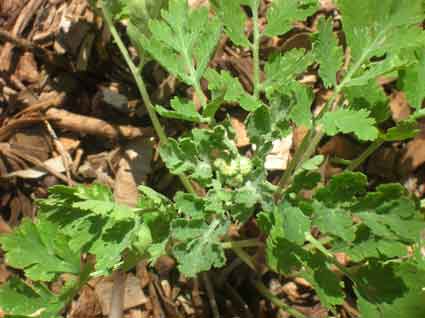
Feverfew / Tanacetum parthenium

Compositae /Asteraceae
Tanacetum
parthenium
Featherfew, Febrifuge plant.
Anti-inflammatory, antispasmodic, aperient , carminative, digestive bitter, emmenagogue , relaxant, sedative, stoachic , uterine stimulant, vasodilatory, vermifuge.
Leaves, occasionally the flowers.
Sesquiterpene lactones (including parthenolide and santamarine), volatile oil (contains camphor, alpha-pinene, bornyl acetate, angelate, costic acid), Sesquiterpenes (camphor), tannins, acetylene derivatives mainly in the root. Melatonin has been reported in some samples.
Primarily used for migraines and headaches. It is also useful for relieving period pain and sluggish menstruation. It could also be useful in arthritis when it is in the painfully active stage. Clinical studies have shown it to allay nausea, vomiting and promote restful sleep. It is also useful for improving digestion and, being related to Tansy, it is also good for getting rid of worms. The tincture can be applied locally/topically to relieve the pain and swelling caused by insect bites. The flowers can help relieve earache. Feverfew has been used traditionally for hot flushes during menopause. Taken during child birth, it will equalize the circulation and make the contractions more regular and firmer if the birth is slow in getting going. Its bitter taste has a beneficial action on the liver, enhancing the appetite and digestion, allaying nausea and vomiting and helping to clear heat and toxins from the system. It is also used as an insecticide spray and can be combined with Tansy and garlic for this . NB. Needs to be avoided during pregnancy. Avoided by patients taking Warfarin and other blood thinning drugs. Caution - the fresh leaves can cause mouth ulcers.
Used for protection against colds, fevers, accidents.
https://www.theherbalist.com.au/herb_gallery/feverfew